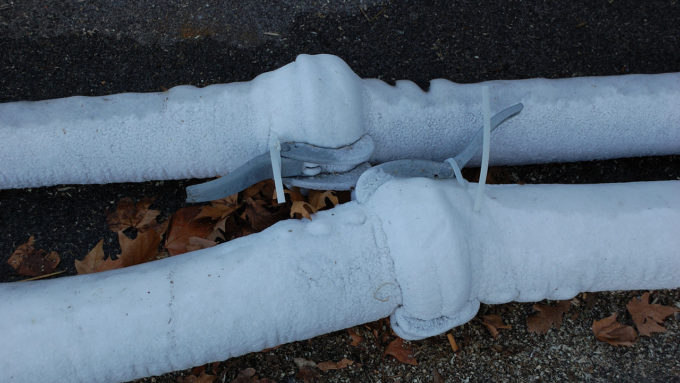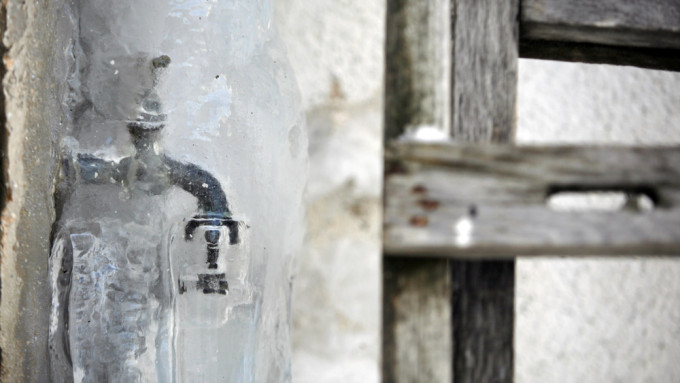You may have or may have not done everything in your power to prevent frozen pipes this winter…yet it still happened. You have a frozen pipe on your hand and need to figure out how to deal with it before damage ensues.
First, how do you even identify whether or not a pipe in your home is frozen?
These are some of the signs:
- Water is not running through the pipes with full efficiency and flow like it normally would…or not running at all.
- You notice frost accumulating on the pipe, which will more than likely happen if it an exposed pipe.
- You may also notice a bulge in one particular area of the pipe if there is a blockage.
- There could be a strange and musty smell coming from the pipe from water sitting inside.
If you notice one of these signs, make sure that your water is still actually on and rule out any leaks. If all is good in those respects, you may have a frozen pipe(s).
Your two options are:
- Hire a professional
- Do-it-yourself
If you are reading this article, you must be wondering how one would go about unfreezing a pipe at home without hiring a professional, but whether you will choose to do this depends on your level of experience and comfort. Of course, doing this yourself can definitely be quick and cost-effective; however, if something goes wrong and you are not very experienced with plumbing, you could be handing over a pretty penny to repair everything.
Let’s take a look at the recommended steps from Bob Vila to unfreezing your frosty pipes.
First and foremost, turn off the water supply to that specific pipe or to the entire house if necessary and check for any cracks or damage to the pipe you are working with. If this step is neglected, once the frost thaws and the water starts flowing again, you and your floor may end up covered in H20.
Next, make sure your faucets have all been opened and drained before you start heating things up.
Once you have identified the frozen pipe(s) and done some damage control, you can use warmth in more than one way to begin thawing it out. A hairdryer, space heater, or warm towel or blanket can help assist you with this process. Do not use anything flammable! The last thing you want is a fire. Do not leave any heat source unattended while thawing.
It is recommended to start thawing closest to the faucet then work your way down.
When the water supply has been turned back on, make sure you check for any leaks or damage; if this is the case, you will more than likely need to contact a professional at this point…you have done all you can do, unless you have plumbing experience.
Unfortunately, we cannot always prevent every frozen or leaky pipe or fix everything that comes your way; if you happen to be in the middle of a winter-weather home disaster, don’t worry—Restoration Certified Specialists, Inc. will take care of you! They have been proudly serving the Santa Rosa and North Bay areas since 1975.


